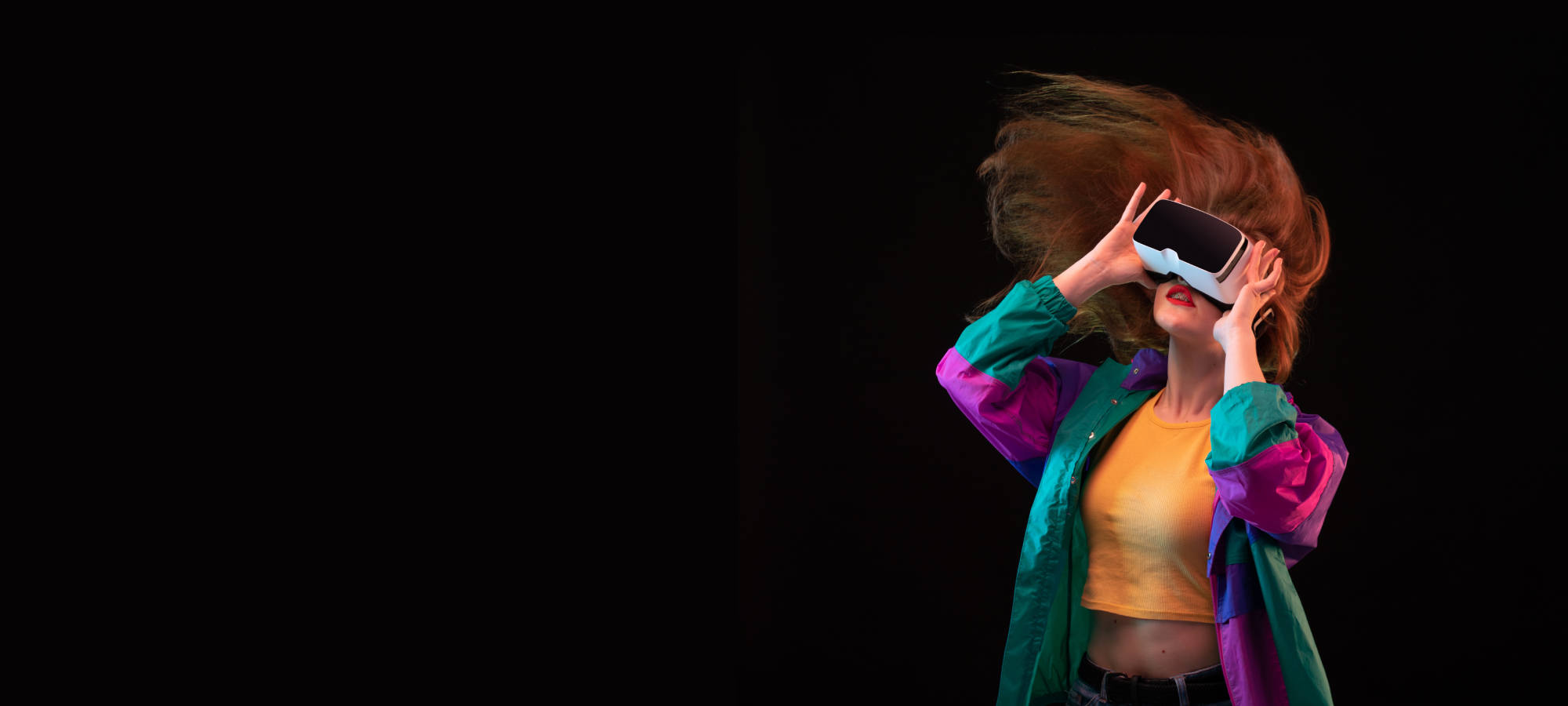Unveiling the Future of Education: How VR is Transforming Learning

In an era of rapid technological advancement, traditional education methods are undergoing a profound transformation. One of the most promising innovations in this shift is the integration of Virtual Reality (VR) into the realm of learning. VR is not merely a tool; it's a gateway to immersive, experiential, and engaging educational experiences that transcend the limitations of traditional classrooms.
1. mmersive Learning Environments:
VR offers students the opportunity to step into historical events, explore distant lands, and witness complex scientific phenomena up close. By immersing learners in virtual environments, education becomes a vivid, memorable adventure that enhances comprehension and retention.
2. Interactive Simulations and Experiments:
Through VR simulations, students can engage in hands-on experiments and scenarios that were previously inaccessible due to safety concerns or practical limitations. Whether it's chemistry, physics, or medical procedures, VR enables learners to experiment and learn in a risk-free yet realistic setting.
3. Personalized and Adaptive Learning:
VR can adapt to individual learning styles and paces, providing tailored experiences that cater to diverse needs. Advanced AI algorithms can analyze student progress and adjust the difficulty level, ensuring a personalized learning journey for each student.
4. Global Classroom Connectivity:
With VR, geographical boundaries become irrelevant. Students from different corners of the world can collaborate, interact, and learn together in shared virtual spaces. This fosters cross-cultural understanding and prepares students for a globally connected future.
5. Engaging Multisensory Experiences:
Learning is most effective when it engages multiple senses. VR combines visual, auditory, and even tactile sensations, making the learning process more engaging and memorable. Complex concepts can be simplified and made comprehensible through interactive 3D models.
6. Empowering Teachers and Trainers:
VR equips educators with powerful tools to create dynamic lessons that captivate and resonate with students. Teachers can guide students through virtual field trips, historical reenactments, and interactive lectures, enhancing their impact and effectiveness.
The integration of VR into education is not just a technological trend; it's a revolution that has the potential to reshape the way we learn and teach. By unlocking immersive experiences, interactive simulations, and global connectivity, VR is paving the way for a future where education transcends traditional boundaries and becomes a boundless journey of exploration and discovery. As VR technology continues to evolve, the future of education is brighter and more exciting than ever before.
Mastering Medical Skills Virtually: Revolutionizing Healthcare Training

The field of healthcare demands precision, expertise, and continuous learning. As medical advancements progress, so do the methods by which healthcare professionals acquire and hone their skills. Virtual Reality (VR) is emerging as a transformative tool in healthcare training, revolutionizing how medical skills are mastered and patient care is enhanced.
1. Realistic Clinical Simulations:
Virtual reality simulations provide aspiring doctors, nurses, and medical practitioners with a platform to practice clinical scenarios in a lifelike environment. From diagnosing rare conditions to performing complex surgeries, VR enables healthcare professionals to develop critical skills through repeated practice.
2. Safe Learning Environment:
VR offers a risk-free space for healthcare trainees to make mistakes and learn from them. Mistakes that could have dire consequences in real-life situations can be rectified and learned from in the virtual world, ensuring higher levels of competence and safety when dealing with real patients.
3. Complex Procedure Training:
Intricate medical procedures can be challenging to learn through traditional methods alone. VR allows trainees to immerse themselves in detailed 3D models, guiding them step by step through complex procedures, enabling them to refine their technique and gain confidence.
4. Team-based Collaborative Training:
Healthcare is often a collaborative effort, involving doctors, nurses, and various specialists. VR enables team-based training, allowing healthcare professionals to practice communication, coordination, and decision-making in simulated patient care scenarios.
5. Empathy and Patient Communication:
Effective patient communication is an essential skill in healthcare. VR can provide training in empathy, active listening, and breaking difficult news to patients, helping medical professionals deliver care with compassion and understanding.
6. Continual Learning and Skill Refinement:
VR doesn't stop at initial training; it supports continuous learning and skill refinement. Medical professionals can use VR modules to stay updated on the latest advancements, refine their skills, and adapt to evolving medical practices.
The integration of Virtual Reality into healthcare training is ushering in a new era of medical education. By providing a safe, immersive, and effective training environment, VR is empowering healthcare professionals to master skills, enhance patient care, and ultimately improve healthcare outcomes. As the technology continues to evolve, the impact of VR on healthcare training is set to grow, ensuring that medical practitioners are better equipped than ever to provide top-tier care to their patients.
Behind the Scenes: Crafting Immersive Virtual Reality Experiences

The captivating virtual reality experiences that transport us to alternate worlds are the result of meticulous craftsmanship that happens behind the scenes. Delving into the creation process of these immersive VR adventures unveils the fusion of technology, artistry, and storytelling that captivates our senses and imagination.
1. Conceptualization and Ideation:
Crafting a VR experience starts with a spark of creativity. Developers, artists, and storytellers collaborate to conceive unique concepts that resonate with audiences. Ideas are brainstormed, refined, and sculpted into the foundation of the virtual world.
2. Technological Framework:
VR experiences require a robust technological framework. The selection of hardware, platforms, and engines shapes the development process. Developers code intricate algorithms, design interactive elements, and ensure smooth interactions within the virtual space.
3. Visual Aesthetics and Design:
Every pixel matters in a VR world. Artists and designers meticulously create 3D models, textures, and environments that align with the narrative. Attention to detail transforms the virtual realm into a visually stunning and believable experience.
4. Soundscapes and Audio Design:
Sound plays a pivotal role in immersion. Sound designers craft immersive soundscapes, including realistic ambient sounds, dynamic music scores, and spatial audio cues that respond to user interactions, enriching the sensory experience.
5. Interactive Storytelling:
VR experiences are more than just visuals; they are stories waiting to be explored. Writers and narrative designers construct engaging storylines, branching paths, and character interactions that draw users deeper into the virtual world.
6. User Experience and Testing:
The user's journey is carefully designed to evoke emotions and engagement. Extensive user testing ensures intuitive interactions, comfortable navigation, and captivating gameplay. Feedback is collected and incorporated to refine the experience.
7. Optimization and Performance:
Crafting an immersive VR experience involves optimizing performance. Developers fine-tune graphics, streamline code, and optimize resource usage to ensure a seamless experience on various VR devices.
The creation of immersive virtual reality experiences is a harmonious dance of technology and art. It's a process that melds creativity, innovation, and technical expertise to transport users into new realms of imagination. As VR technology evolves, the behind-the-scenes magic will continue to push the boundaries of what's possible, offering users ever more captivating and enchanting journeys into the virtual unknown.
From Pixels to Masterpieces: Exploring Artistic Expression in VR

The convergence of art and technology has birthed a new era of creative expression – one that transcends traditional canvases and transports artists into virtual realms of endless possibilities. The marriage of artistic prowess with Virtual Reality (VR) is not just a technological innovation; it's a redefinition of how art is conceived, crafted, and experienced.
1. Unbounded Creation Space:
VR eliminates the constraints of physical space, allowing artists to sculpt, paint, and design in 3D dimensions without limitations. The virtual canvas becomes a realm where the only boundaries are the artist's imagination.
2. Interactive Artistry:
VR empowers artists to engage with their creations in unprecedented ways. Brushstrokes become dynamic movements, sculptures can be rotated and examined from all angles, and audiences can step into the heart of the artwork itself.
3. Medium Diversity and Experimentation:
Virtual reality artistry transcends traditional mediums. Artists can seamlessly blend sculpture, painting, music, and even animation within a single VR creation, fostering unparalleled experimentation and innovation.
4. Audience Interaction and Engagement:
The immersive nature of VR art invites audiences to become active participants. Viewers don't merely observe; they navigate, explore, and influence the artwork, forging a unique and personal connection with the piece.
5. Global Collaboration and Exhibitions:
VR dissolves geographical boundaries, enabling artists from around the world to collaborate on shared projects or exhibit their works in virtual galleries accessible to a global audience.
6. Evolution of Artistic Narratives:
Storytelling in VR art takes on a new dimension. Artists can guide viewers through narratives, offering a sequence of experiences or emotions that unfold as participants move within the virtual space.
7. Democratization of Art Access:
VR democratizes art by making it accessible to a broader audience. Individuals who may never have stepped foot in a traditional art gallery can now explore, appreciate, and even create art from the comfort of their homes.
The marriage of artistic expression and virtual reality heralds an exciting era where creativity knows no bounds. From sculpting monumental sculptures in mid-air to painting entire universes with a flick of the wrist, artists are pioneering a new form of artistry that melds tradition with innovation. As the canvas expands into the virtual realm, artistic expression evolves, challenges norms, and invites us all to witness the transformation of pixels into masterpieces.





